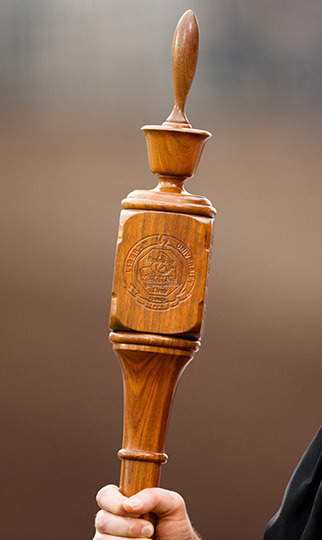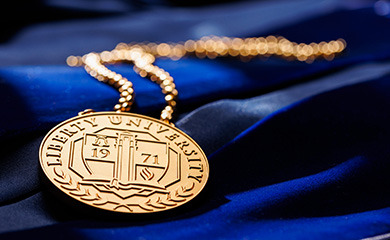
History of Presidential Inaugurations
A presidential inauguration is a long-standing tradition in academia. With the installation of the new president as the ceremony’s centerpiece, the inauguration formally marks the beginning of a new chapter in the university’s leadership. This celebratory event also affords the unique opportunity to both commemorate a milestone and honor the school’s history.
In keeping with tradition, this inauguration ceremony will feature formal elements, including an academic procession, special music selections, the installation (swearing-in) of the president, and President Dondi E. Costin’s address.
History of Liberty University
It started with a mountain and a dream.
In 1971, Jerry Falwell Sr. dreamed that the world would be filled with doctors, lawyers, pilots, engineers, nurses, teachers, artists, and professionals from every walk of life who loved God and were the very best at what they’d been called to be.
He cast an audacious vision of a world-class Christian university that would train young people to go out into all walks of life as Champions for Christ. He walked and prayed over the ground he hoped to build this dream upon — the same mountain that he had hunted on as a child. Then, he invited his congregation at Thomas Road Baptist Church, his friends and family, his community, and all who would listen to join him in this mission. And join they did.
In September 1971, Lynchburg Baptist College (LBC) held its first day of classes with just 154 students meeting in Thomas Road Baptist Church and its educational buildings.
Through those founding years, students and faculty were inspired to influence the moral and ethical course of America. Subsequently, the school’s name officially changed to Liberty Baptist College in 1975, and the colors were changed to red, white, and blue in 1976. The college achieved accreditation with the Southern Association of Colleges and Schools Commission on Colleges in 1980.
By 1985, the school had become recognized as an accredited university, adding programs and garnering recognition from both mainstream culture and the world of academia. Liberty also pioneered a distance learning program that year, launching what is now known as Liberty University Online Programs.
Today, Liberty has more than 130,000 residential and online students and over 285,000 alumni influencing the world in their respective fields. We have 700+ areas of study, 20 NCAA Division I athletic teams — including an FBS football team — and a 7,000-acre campus comprised of state-of-the-art buildings and facilities.
Liberty’s journey has been one of facing giants, making the impossible possible, watching fervent prayer move mountains, and Training Champions for Christ — all by the grace of God.
Importance of the Mace

A powerful symbol of authority hailing from the medieval period, the mace is traditionally carried at the front of an academic procession in representation of a university’s heritage, character, and right to confer degrees upon graduates.
On the 25th anniversary of the founding of Liberty University, master craftsman David Morgan was commissioned to create the Liberty University Mace. Designed with four faces, the mace exhibits the university seal, the school motto, an engraving of the eagle’s head, and the university verse: “Where the Spirit of the Lord is, there is liberty” (2 Corinthians 3:17).
Regalia Symbolism
Participants in the Liberty University Presidential Inauguration’s academic procession are dressed in proper regalia. The tradition of wearing caps, gowns, and hoods as attire in formal academic ceremonies dates back to the 12th and 13th centuries in Europe. In that time period, regalia colors and costumes were used as visual representations of an individual’s rank and occupation or discipline to a widely illiterate population. This tradition would later come to the U.S. in the 19th century.
In 1932, the American Council on Education incorporated both European and American regalia symbolism into a formal costume code for higher education faculty. Updated in 1959 and 1986, this code distinguishes and differentiates the attire of holders of the associate, bachelor’s, master’s, specialist, and doctor’s degrees, with doctoral dress being the most elaborate.
Based on traditional doctoral gowns, presidential regalia reflect a finer quality and styling over other forms, and presidents are the only academics to wear a fourth velvet sleeve chevron. The design also displays significant symbols of office. The ensemble is completed with either a doctor’s tam and gold tassel or a mortarboard and tassel, as well as a hood.
Sections of information regarding regalia were obtained from Harris, A.L. (2005). Academic Ceremonies. United States of America: Council for Advancement and Support of Education.
Academic Processional
The academic processional is derived from symbolic elements included in the historical clerical processions of the Roman Catholic Church. Similar to processionals held during Commencement Ceremonies, it includes representatives from the host university and other attending colleges and universities.
Presidential Medallion

The President’s Medallion is the badge of office for the presidency of Liberty University and is worn by the president when participating in formal university ceremonies.